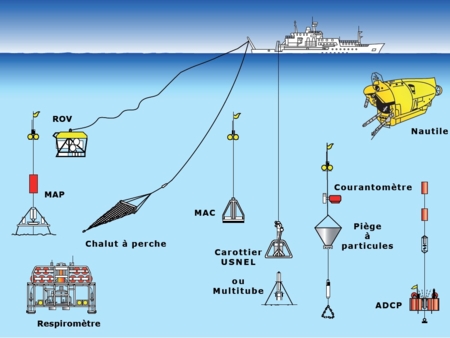Spatial and temporal dynamics of microbial communities in active hydrothermal vents
In deep-sea hydrothermal vents, the mixing between hot, acidic and anoxic hydrothermal fluid with seawater leads to the formation of hydrothermal chimneys. These are porous structures whose mineralogical composition changes over time. Thermal and chemical gradients are favourable to the growth of microbial communities, that present a high taxonomic, physiologic and metabolic diversity. Despite numerous studies about the microbiology of hydrothermal environments, the spatial and temporal dynamics of microbial communities in hydrothermal vents remain relatively unknown. Our study was based on a rigorous sampling of hydrothermal chimneys from six sites in the Lucky Strike hydrothermal vent field, and the associated proximal plume. The mineralogical composition of hydrothermal chimneys, determined by X-ray diffraction, was used to estimate the growth stage of the chimneys. Complementary approaches were implemented to study and compare the microbial communities in chimneys and proximal plume. The phylogenetic diversity and the structure of these communities was studied by a metabarcoding approach, and functional information were obtained by realizing continuous cultures in bioreactor, MPN enrichments and metabolic activities measurements. A strain of the genus Persephonella was isolated and described. The investigation of its physiological and metabolic capacities has highlighted its adaptation to the hydrothermal environment







